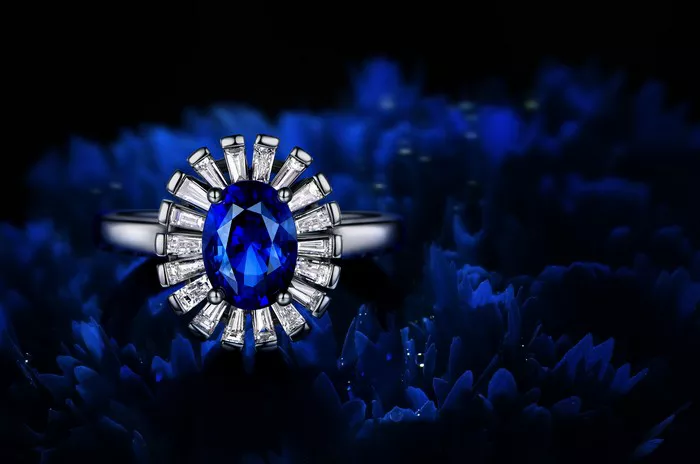Ceylon yellow sapphires are renowned for their vibrant hues, elegance, and rarity. As a jewelry appraiser, identifying genuine Ceylon yellow sapphires amidst the myriad of imitations and treated gemstones is a crucial skill. This guide provides a detailed introduction to the characteristics and identification methods of Ceylon yellow sapphires, offering insights into their geological origins, physical properties, and the techniques used to authenticate their authenticity.
Geological Origins and Characteristics
Understanding the geological origins and characteristics of Ceylon yellow sapphires is the first step in identifying their authenticity.
Origin and Formation
Ceylon, now known as Sri Lanka, is renowned for producing high-quality sapphires with a unique range of colors, including yellow. These sapphires are formed under specific geological conditions within the island’s ancient metamorphic rocks. The region’s rich geological history, including tectonic activity and magmatic events, has created the ideal environment for the formation of corundum crystals, the mineral that constitutes sapphires.
Chemical Composition and Color
Ceylon yellow sapphires are composed of aluminum oxide (Al₂O₃) with trace amounts of iron and titanium, which give them their yellow hues. The color intensity and shade can vary depending on the concentration of these trace elements. Genuine Ceylon yellow sapphires often exhibit a warm, radiant yellow color with a slight orange or greenish tint, which is distinct from other types of yellow sapphires.
Physical Properties and Identification Methods
Identifying genuine Ceylon yellow sapphires involves examining their physical properties and using specialized techniques to authenticate their authenticity.
Clarity and Transparency
Ceylon yellow sapphires are typically found in a range of clarity grades, from eye-clean stones with minimal inclusions to those with more visible flaws. However, genuine Ceylon sapphires often contain unique inclusion patterns, such as silk or fingerprint inclusions, which can serve as identifying features. These inclusion patterns are the result of the gemstone’s formation process and can vary depending on the specific geological conditions of the deposit.
Hardness and Refractive Index
Sapphires, including Ceylon yellow sapphires, have a hardness of 9 on the Mohs scale, making them one of the hardest natural minerals. This hardness is a key characteristic that distinguishes sapphires from other gemstones. Additionally, Ceylon yellow sapphires have a specific refractive index, which affects how light interacts with the gemstone. This can be measured using specialized equipment and compared to known values for Ceylon sapphires.
Spectral Analysis
Spectral analysis is a crucial technique for identifying the authenticity of Ceylon yellow sapphires. This involves examining the gemstone’s absorption spectrum using a spectrophotometer, which measures how the gemstone absorbs light at different wavelengths. Genuine Ceylon yellow sapphires exhibit specific absorption patterns that are distinct from other types of sapphires or treated gemstones. These patterns can provide valuable insights into the gemstone’s composition and origin.
Authentication Techniques
In addition to examining physical properties and spectral analysis, several authentication techniques can be used to verify the authenticity of Ceylon yellow sapphires.
Heat Treatment Detection
Many sapphires, including some Ceylon yellow sapphires, undergo heat treatment to enhance their color and clarity. While heat treatment is a common practice in the gemstone industry, it can affect the gemstone’s value and authenticity. Specialized equipment can be used to detect traces of heat treatment, such as changes in the gemstone’s crystal structure or inclusion patterns.
Origin Tracing
Tracing the gemstone’s origin can also provide valuable insights into its authenticity. Ceylon yellow sapphires are typically sourced from specific mining areas within Sri Lanka, and gemologists can use geological and mineralogical data to verify the gemstone’s origin. This involves comparing the gemstone’s characteristics to known data for Ceylon sapphires and examining any unique features or inclusion patterns that are indicative of the region’s geological conditions.
Certification and Documentation
Finally, obtaining certification and documentation from a reputable gemological laboratory can provide additional assurance of the gemstone’s authenticity. These laboratories use advanced techniques and equipment to analyze the gemstone’s physical properties, spectral characteristics, and origin. They provide detailed reports that include information on the gemstone’s quality, treatment history, and origin, which can be used to verify its authenticity and value.
Conclusion
Identifying genuine Ceylon yellow sapphires amidst the myriad of imitations and treated gemstones requires a combination of knowledge, experience, and specialized techniques. By understanding the geological origins, physical properties, and authentication methods of Ceylon yellow sapphires, gemologists and jewelry appraisers can accurately assess their authenticity and value. Whether you’re a collector, investor, or simply someone who appreciates the beauty of gemstones, knowing how to identify genuine Ceylon yellow sapphires will help you make informed decisions and appreciate their unique charm.
Related topic:
- What Does Yellow Sapphire Look like Under Ultraviolet Light
- Coral and Yellow Sapphire: What is the Difference in Quality Identification?
- Lab-made Yellow Sapphire Rings: Can They Replace Natural Ones?


